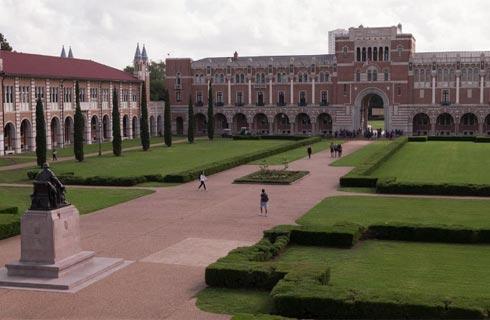神经科学哲学博士
Doctor of Philosophy in Neuroscience

学历文凭
Ph.D.

专业院系
Neuroscience Program

开学时间

课程时长

课程学费

国际学生入学条件
IDP—雅思考试联合主办方

雅思考试总分
6.5
- 雅思总分:6.5
- 托福网考总分:88
- 托福笔试总分:570
- 其他语言考试:Pearson Academic Test of English: A minimum score of 59, all applicants
CRICOS代码:
申请截止日期: 请与IDP联系 以获取详细信息。
课程简介
The Interdisciplinary Program in Neuroscience offers a doctoral program. The program focuses on the study of the brain and addresses the challenge of developing an integrative understanding of cognition and higher brain function. In response to this challenge, the rapidly developing field of neuroscience has produced an exponential increase in the amount of data available to investigators as they develop new theories of brain function and new hypotheses to test. The main objective of the program is to prepare students to participate at the cutting edge of this exciting field in academia, industry, and government. The program provides students with a rich interdisciplinary intellectual environment that fosters the development of the skills they will need to successfully pursue research careers.Current faculty research focuses on the broad areas of behavior, anatomy, physiology, neuropharmacology, molecular biology, computational modeling, and informatics. External research collaborations exist with federal agencies, private and not-for-profit corporations, and other universities. The scope of research ranges from the subcellular and molecular level (in the context of such phenomena as drug addiction and the biological basis of schizophrenia) to the systems and behavioral level.Current research projects include plasticity mechanisms supporting development, network formation and information processing, cellular and subcellular models of associative learning, biochemical dynamics in disorders of the basal ganglia, computational methods for simulation of complex biological systems, role of metals in memory and Alzheimer's disease, dynamical behavior of neurons and networks of neurons, and identifying and characterizing protein interactions for the dopamine and nicotinic acetylcholine receptors in the brain.
相关申请
 预科
预科 奖学金
奖学金 实习机会
实习机会 在校学习
在校学习 跨境学习
跨境学习 校园授课-线上开始
校园授课-线上开始 在线/远程学习
在线/远程学习
学校排名

世界排名251
数据源:
泰晤士高等教育世界大学排名
关于乔治梅森大学

乔治梅森大学于1972 年建校,该校已经快速地成长为一所世界级的高等教育机构,学校内有着国际知名的教师团队和富有竞争力的学生团体。学校学科齐全,在这里总可以找到你的学习激情! 该校位于北维吉尼亚州的科技走廊区且靠近华盛顿市,位置非常优越,有着丰富的实习和工作机会。学生还可通过与在癌症、气候变化、信息技术和生物科学领域有着突破性研究的教授一起工作,获取真正的实践经验。 乔治梅森大学被《美国新闻与世界报道》评为全美排名前 150 名的大学,并被《普林斯顿评论》评为“美国东南部最佳大学”。学校强大的法律、经济、创作性写作和计算机科学计划吸引了来自全球各地的学生。 该校的留学生计划和服务办公室设施齐全,在为国际留学生提供社会和文化支持的同时,还为学生提供咨询服务。无论学生的英语级别如何,该校的英语语言机构为以英语作为第二语言的学生提供英语强化课程,同时,还为非本地语言的学生提供写作、语法和发音教学。 距美国首都华盛顿仅15里,是近十年来在美国迅速崛起的一所主要的大学。
本校相关课程
其他相关课程

心理学哲学博士-认知神经科学
 滑铁卢大学
滑铁卢大学学历文凭
Ph.D.
开学日期
课程费用总额


行为神经科学理学学士
 劳伦森大学
劳伦森大学学历文凭
Bachelor Degree with Honours
开学日期
课程费用总额


心理学和神经科学哲学博士
 达尔豪斯大学
达尔豪斯大学学历文凭
Ph.D.
开学日期
课程费用总额


神经科学理学学士
 达尔豪斯大学
达尔豪斯大学学历文凭
Bachelor Degree
开学日期
课程费用总额


神经科学理学硕士
 渥太华大学
渥太华大学泰晤士高等教育世界大学排名:188
学历文凭
Masters Degree
开学日期
课程费用总额


神经科学哲学博士
 渥太华大学
渥太华大学泰晤士高等教育世界大学排名:188
学历文凭
Ph.D.
开学日期
课程费用总额









 美国
美国





